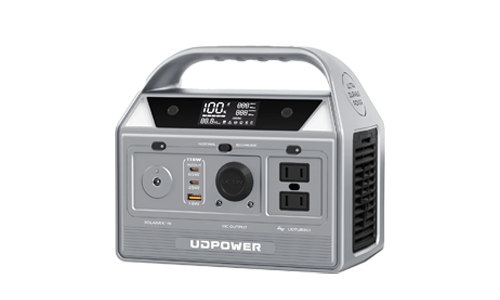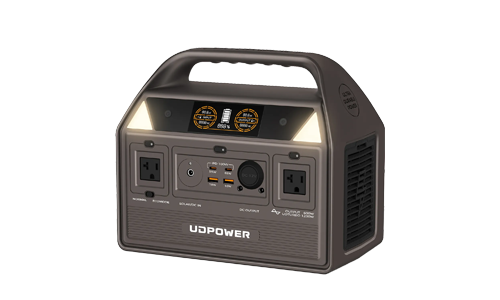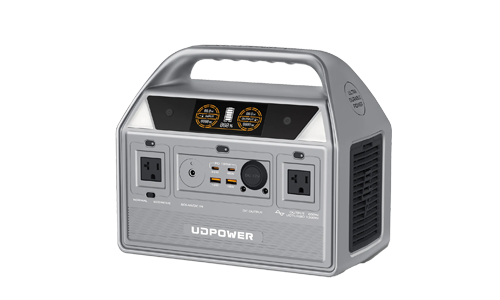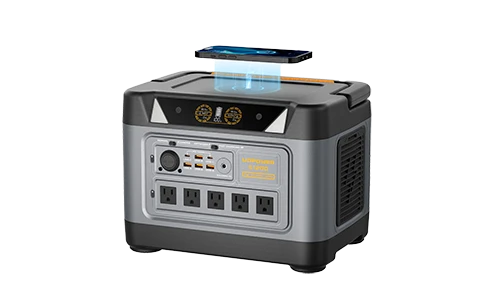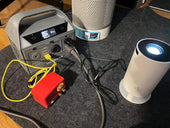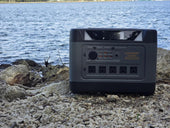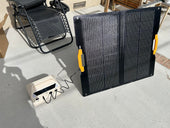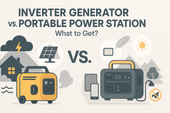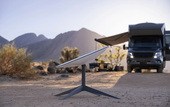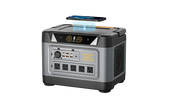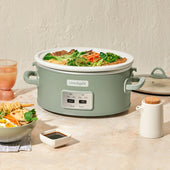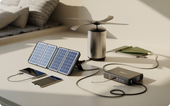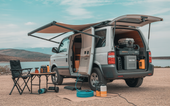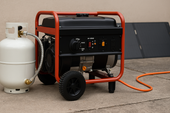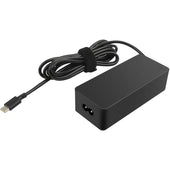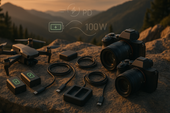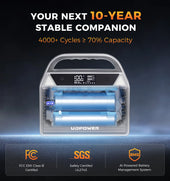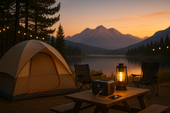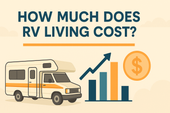How to Do a 3-Day RV Weekend Micro-Vacation on $200/Day
ZacharyWilliamA field-tested plan to cap your total at $600 for a Fri–Sun RV escape—covering fuel, sites, food, activities, and power. Includes verified UDPOWER picks for quiet, reliable electricity off-grid.

1) The $200/day budget—where the money goes
| Category | Daily cap | 3-day total | Notes |
|---|---|---|---|
| Campsite | $40–$75 | $120–$225 | Public parks or value private sites; one night can be free/cheap (dispersed). |
| Fuel/tolls | $40–$60 | $120–$180 | Keep round-trip <200–250 miles; cruise at steady speeds. |
| Food | $30–$40 | $90–$120 | One grocery run; cook 2 meals/day; 1 treat/coffee per day. |
| Activities/fees | $10–$20 | $30–$60 | Day-use, trail permits, kayak rental, etc. |
| Power/connectivity | $0–$10 | $0–$30 | Solar/portable power keeps costs low; avoid generator gas. |
| Total | ≈ $200 | ≤ $600 | Stay flexible: swap one paid activity for a free hike if fuel runs high. |
2) A realistic 3-day itinerary (Fri–Sun)
Friday (arrival & golden hour)
- Depart by 2–3 PM to avoid traffic; check-in around 5–6 PM.
- Easy dinner (pre-marinated protein + bagged salad + bread).
- Stroll the loop; sunset photos; stargazing.
Saturday (big activity day)
- Morning: trail/cycling/paddle (free or low fee); pack sandwiches.
- Afternoon: nap/reading; charge devices off the power station.
- Evening: camp classic—foil-pack veggies + s’mores.
Sunday (slow reset & return)
- Light breakfast; short loop hike or lookout.
- Break camp by 11 AM; lunch en route to avoid premium prices.
- Arrive home early—no Sunday night stress.
3) Campsite strategy: save without suffering
- Book 2 nights only. If you can, make the third night a free/cheap dispersed spot or a public lot (where legal) to hit the $200 average.
- Hookups vs. no-hookups: Skip full hookups for 2 nights; use a portable power station and the RV’s onboard tanks.
- Shoulder seasons shine: Lower rates, better availability, fewer crowds.
- Wi-Fi expectations: Assume weak campground Wi-Fi; bring a hotspot and efficient power setup.
4) Power & connectivity: quiet, safe, all-weekend
For laptops, Chromebooks, cameras, lights, fans, router/Starlink, and a 12V cooler, a LiFePO4 portable power station is quieter, safer, and cheaper to run than a gas generator on a short weekend. Here are two UDPOWER options with verified specs:
UDPOWER C600 — The weekend sweet-spot


- Capacity: 596 Wh LiFePO4 • Output: 600 W continuous / 1,200 W peak
- Ports: 2× AC, USB-C 65 W + 35 W, 2× USB-A 18 W, 12 V car outlet
- Weight: ~12.3 lb (very portable)
- Use-case fit: 2 laptops + camera charging, LED string, router, overnight CPAP (humidifier off)
Specs verified from UDPOWER’s C600 product pages.
UDPOWER S1200 — Bigger buffer + UPS capability

- Capacity: ~1,190 Wh LiFePO4
- AC Inverter: 1,200 W continuous / 1,800 W surge
- Inputs: AC up to 800 W; solar 12–75 V, up to 400 W via DC7909
- UPS/bypass: switchover <0.01 s (keeps PCs/routers online during brief outages)
- Ports: up to 5 AC, dual 100 W USB-C PD, multiple USB-A/DC, wireless (varies by region batch)
Specs verified from UDPOWER’s S1200 page and site banners.
How much power do you actually need?
- Work kit (per day): 1 laptop 60 W × 4 h + phone 15 Wh + camera 20 Wh ≈ 275 Wh.
- Camp kit (per evening): Lights/fan/router ≈ 80–120 Wh.
- 3-day total (two people): ~800–1,100 Wh. C600 covers minimalist use; S1200 adds headroom for fans, projector, or a 12V fridge.
5) Simple menu & grocery plan
Grocery list (≈ $60–$80 total)
- Proteins: pre-marinated chicken/thighs; breakfast eggs; canned tuna
- Carbs: tortillas, bread, instant rice, oatmeal
- Sides: bagged salad, cherry tomatoes, onions, peppers
- Snacks: nuts, granola bars, fruit
- Beverages: coffee/tea, electrolyte packets
3-day menu
- Fri dinner: skillet chicken + peppers, tortillas
- Sat breakfast: oats + fruit; lunch: tuna wraps; dinner: foil-pack veggies + sausages
- Sun breakfast: eggs + toast; lunch: roadside sandwiches
6) Packing list (budget-smart)
- UDPOWER power station (C600 or S1200) + USB-C PD cables; optional 120W folding solar panel for daytime top-ups.
- LED string or lanterns; small 12V fan; headlamps
- Two-burner stove or RV galley kit; compact cooler/12V fridge
- Day-packs; trekking poles; camp chairs; rain/wind layer
- Basic first-aid + multitool; paper maps for no-signal zones
7) Cost calculator you can adapt
| Input | Rule of thumb | Your number |
|---|---|---|
| Round-trip miles | Keep ≤ 250 mi for fuel under $60/day | ___ |
| Campsite mix | 2 paid nights + 1 low/no-cost night | ___ |
| Meals out | ≤ 1 paid treat/day (coffee/ice cream) | ___ |
| Power usage | Target ≤ 350 Wh/day/person | ___ |
8) FAQ: where people overspend
Do I need full hookups?
Not for 2–3 nights if you manage water and bring a power station.
Can I work remotely?
Yes—budget ~150–300 Wh per half-day on a laptop and keep a small hotspot powered via USB-C.
Is the S1200 overkill?
If you run a 12V fridge, projector, or multiple laptops, the headroom is worth it; otherwise C600 is the value pick.


